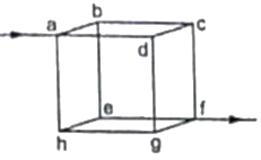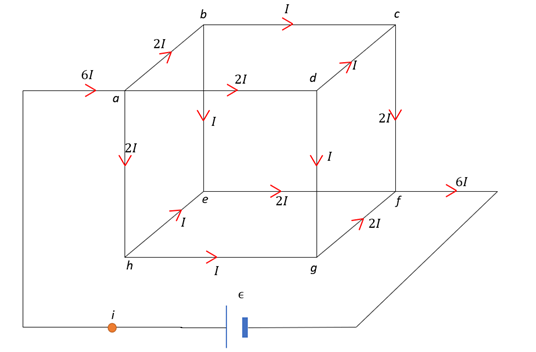Twelve wires, each having equal resistance r, are joined to form a cube as shown in figure. Find the equivalent resistance between the diagonally opposite points a and f.

Concept/Formula used:
Kirchhoff’s junction rule:
The sum of currents entering a junction is equal to the sum of currents leaving it.
Kirchhoff’s loop rule:
The sum of potential differences around a closed loop is zero.
As we need to find the equivalent resistance across a and f. We connect these two a source of emf ϵ.
Now, we will exploit the symmetry in the cube to find the current in each branch. Let the net current be 6I. Then, it distributes equally in all 3 branches due to symmetry. Hence, ab, ah and ad have current of 2I. Now, it further divides into two branches of current I. All this is in accordance with the junction rule.
Now, following the junction rule, we can find out the rest of the currents.

Applying Kirchhoff’s loop rule on loop adgfia,
![]()
Now, we need the find an req such that
![]()
Using (1), we get
![]()